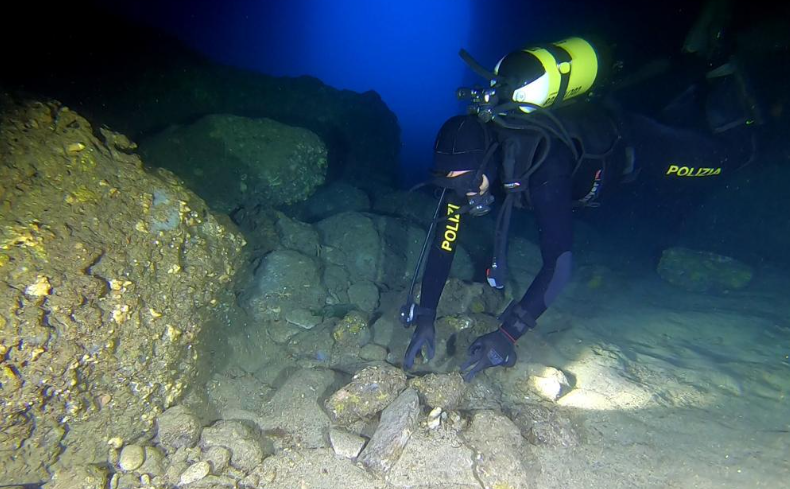A fascinating discovery by underwater archeologists from the Superintendency of the Metropolitan Area of Naples has unveiled remnants of a Neolithic shipwreck resting off the coast of Capri, Italy.
Amidst the sunken remains, a trove of obsidian, a prized volcanic glass used in crafting prehistoric tools, was meticulously unearthed, marking an unprecedented find in maritime archeology.

Underwater archeologists near Capri found a Neolithic shipwreck with obsidian artifacts, hinting at ancient seafaring and trade networks in the Mediterranean's Stone Age.
Divers Discover Ancient Shipwreck
IFLScience reports that divers, initially from the Naples Police Headquarters' underwater unit fortuitously stumbled upon the vestiges of this Stone Age vessel near the illustrious Blue Grotto, an iconic bathing site frequented by Roman emperors. What they unearthed beneath the waves sparked a surge of excitement among the archeological community.
At a depth of around 40 meters, they recovered a cache that includes a series of meticulously crafted obsidian cores, one of which stands out with vivid evidence of ancient artistry-bearing chiseled marks and carvings on its surface.
This sizable, sculpted core, measuring 28 by 20 by 15 centimeters and weighing nearly 8 kilograms, is a testament to our ancient forebearers' advanced craftsmanship.
Superintendent Mariano Nuzzo, overseeing this profound discovery, elucidated the arduous nature of the ongoing excavation efforts.
"An extensive instrumental survey of the seabed is crucial," he explained in a statement, "to uncover potential remnants of the vessel or other cargo materials, albeit in a challenging environment given the low seabed altitudes."
While the identity of the sailors and the exact origins of this obsidian haul remain shrouded in mystery, this find ignites a beacon of fascination about the Stone Age seafaring prowess.
Moreover, it hints at the extensive trade networks that potentially spanned the ancient Mediterranean, shedding light on the migratory patterns of our early ancestors.
Read Also: Ancient Cuneiform Tablets Become Readable With New Automatic Text Recognition Tool
A Glimpse of the Stone Age
Capri's historical tapestry, previously adorned by the footprints of Roman emperors, now harbors new chapters awaiting discovery. The island, a canvas of human activity during the Neolithic and Bronze Age, holds secrets begging to be unearthed, promising revelations about ancient civilizations and their maritime endeavors.
Similar obsidian findings from distant locales, like Melos in Greece, tantalize historians with visions of ancient seafaring expeditions, challenging conventional timelines of human migration.
As the archeological team, in collaboration with authorities and experts, prepares for subsequent recovery operations, the anticipation builds for a deeper understanding of not just Capri's prehistory but the broader saga of the ancient Mediterranean.
In Other News
More Sea Discoveries: Known as the "holy grail of shipwrecks," the San Jose is set to be recovered from its deep-sea location near Cartagena's port along the Caribbean coastline.
Resting on the ocean floor, this Spanish galleon is famed for its immense treasures, estimated by discoverers to potentially exceed $20 billion.
Stay posted here at Tech Times.
Related Article: Archaeologists Unearth Europe's Massive Bronze Age Structures That Are Part of Defense Network










